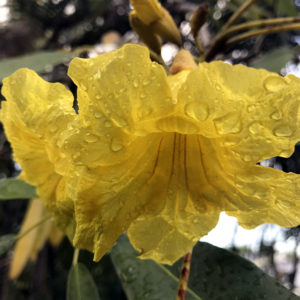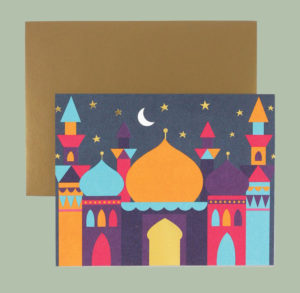Two unlikely things have happened in the last two weeks, both of which make me think of my father, and just in time for his 93rd birthday, which would be tomorrow, on the 18th. First of all, I bought my first pair of boxing gloves. If you’d have suggested just a month ago that I’d be wearing boxing gloves, let alone owning a pair, I’d have laughed at you. But Seth and I keep active and our trainer of many years up and left a few months ago on a whim, moving on to New York or L.A. or lord knows where. We were left floundering about for a few weeks, making some half hearted attempts at going to a regular gym mixed with periods of sitting home eating popcorn and binge watching Project Runway. But we have of late gotten involved in another training situation and it’s good, it’s varied… and we’ve been finding ourselves in group fitness classes with names like Fight Camp and Kickboxing Camp and well, one thing has lead to another and now we both own boxing gloves. I think of my dad every time I wrap my hands and struggle to get the gloves on. I’m not sure if he’d be impressed or if he’d be laughing at me. His son is about the unlikeliest boxer you’ll ever meet, and he knew that and eventually (I think) came to be at peace with the fact that, despite his best efforts, I could never quite connect bat to ball or figure out left hook from right or understand how to get that blasted oil filter wrench going in the right direction. (I would more often than not be under the car tightening the filter even more while he was explaining to me––well… yelling, swearing––from above how to loosen it.)
But anyway, here I am these days: in boxing gloves, hitting punching bags hanging from chains, bags that are probably heavier than I am. I couldn’t wait for the hour of my first Fight Camp to end because no one had shown me how to wrap my hands properly and so I did it my way––the way a bookbinder would wrap a leather bound book he’s just covered––and wrapped them so tight, I soon couldn’t feel my fingers. I kept hitting things even though I really wanted to just stop and cry, it was so painful. But I mustered on (another trait I inherited from my dad) and did a lot of swearing under my breath instead, and every now and then stepped outside for a breath of air and to shake out my gloved hands. The second time, our trainer showed me how to wrap my hands properly. That made a big difference, and I was beginning to think I was getting a grip on this boxing thing.
The third time, Seth and I were late for Fight Camp, so we ended up being the only two people to show up for Kickboxing Camp, which was scheduled after. It was a Friday night––last Friday night––at 7 PM. I had a feeling that if it wasn’t for us, the trainer might probably be off on a Friday night date, but instead José, who looks like he is no stranger to the ring, was stuck with two goofs in boxing gloves. What ensued was, I could only surmise, punishment. We stretched, we ran two laps carrying dumbbells, and when we got back, José set us on our path for the night: 10 jabs to the big bag, 10 hooks left and right, 10 knees, 10 kicks, then down for 10 push-ups, then 30 seconds of intense cardio. No rest. And then up the ladder: 20 jabs, 20 hooks, 20 knees, 20 kicks, 20 push-ups. Then 30. Then 40. And finally, 50. If you’ve ever done 50 push-ups in boxing gloves, let’s talk. José pushed us and pushed us. Come 8:00, when our session was done, José was gone, nowhere to be seen, and Seth and I emerged near broken, but triumphant.
Which brings me to the second of the two unlikely things that have happened that make me think of my father. My triumph from Kickboxing Camp carried through that night and the next day until about 1:30. I couldn’t decide if my biceps were sore or if it was my triceps, but it was Saturday––Cleaning Day––and I was cleaning house and I was pushing through the soreness just fine. I cleaned the bathrooms, I got out the vacuum, but then I thought I’d change the cat’s litter before doing the floors. I emptied the old litter, cleaned the box, replaced it with fresh litter––such a satisfying thing. When I went to set the litter box in its place, I could feel a little twinge in my lower back, just the slightest thing, but you know, I do have that Dad trait of mustering on, and so I did muster on, and it was right there, in that process of mustering, that the twinge escalated into something more like twisting dagger. I found myself on the floor and spent a good part of the day there. Seth gave me my lunch there on the floor (I was still hungry, after all) and I had a devil of a time getting up off the floor but eventually I did. Since then, ice packs, massage, and acupuncture, all have been helping. On Sunday we went to the family’s for Mother’s Day dinner and when I walked in using a broomstick to help me walk, Mom said, “Here, use this.” It was my dad’s cane. He never used it, because he was amazingly stubborn about things like that, but my cousins in Chicago sent it to him, with the best intentions, when he began having trouble walking. It’s pretty fancy: sturdy black wood with a crystal knob. It’s made in Italy. When I use it, I feel like Fred Astaire, like I should have a top hat. It’s not quite my style, but it’s so much better than the broomstick I was using, and it, too, like the boxing gloves, reminds me of Dad. Which is perhaps just right as we approach his birthday. It’s the third one we are marking since he’s been gone. But in the past couple of weeks, I have all these reminders of Dad, and they make me happy, in spite of the pain. I wouldn’t trade them if I could.
For those of you wonder if physical fitness is bad for us, well, you may be right: the week before buying my boxing gloves Seth and I were in a regular, non-punching bootcamp class. One of the stations involved slamming a medicine ball to the ground. I picked up the wrong kind of ball. Medicine balls land with a thud on the ground, but mine did not. It bounced. It was a 20 pound ball, and I slammed it good and hard to the ground, from up over my head, and was completely dismayed when it bounced up and hit me square in the jaw. I did, in fact, see stars. I was impressed with myself for not passing out. I thought of my dad then, too, and could picture him shaking his head and laughing at me. After Friday night’s Kickboxing Camp, before José ran off, I told him that story. He laughed. “Oh, I’m definitely checking the security cameras for that,” he said.




